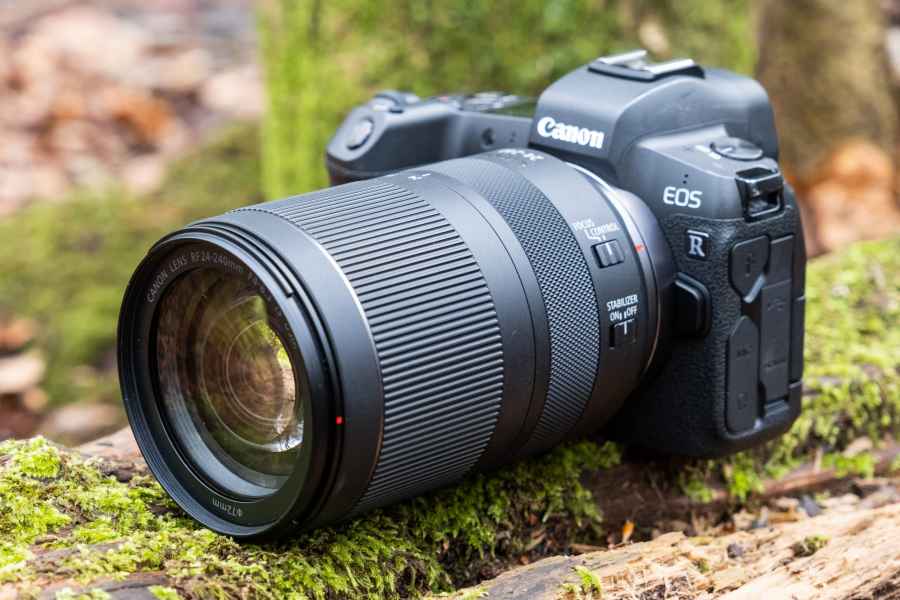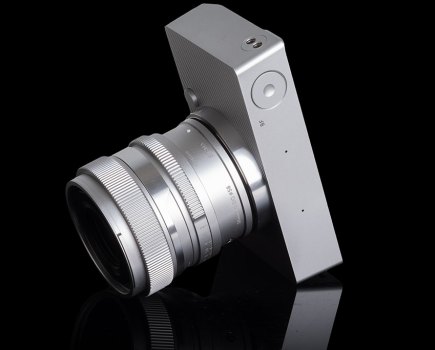Canon RF 24-240mm F4-6.3 IS USM review: Introduction
It was around this time last year that Canon revealed plans to strengthen its lineup of four lenses that were initially released for the EOS R system by adding six lenses that would arrive over the course of 2019. One of these, and possibly the most interesting, was the new RF 24-240mm F4-6.3 IS USM – an optically-stabilised 10x superzoom that addresses concerns surrounding the system of there not being an all-in-one lens available.

The RF 24-240mm F4-6.3 IS USM was paired up with the Canon EOS R for the purpose of this review
The benefit of a zoom like the one we’re looking at in this review is that it covers most bases for trips away when space might be limited or you want to travel light and only take one lens with you. Wide enough to capture stunning landscapes and long enough to pick out sports or wildlife subjects, it’s currently the longest zoom Canon has made since entering the mirrorless market. Before analysing its optical performance lets take a closer look at its key features.
Canon RF 24-240mm F4-6.3 IS USM review: Features
The RF 24-240mm F4-6.3 IS USM is compatible with Canon’s EOS R and EOS RP full-frame mirrorless cameras. As well as being sold on its own, it’s available as part of a bundle with the EOS RP (£1824), but not the EOS R. This, combined with the fact it’s not an L-series lens, underlines that Canon sees the lens being most popular with amateurs and enthusiasts who own, or are considering, the EOS RP, which remains the smallest and lightest full frame mirrorless camera in the EOS R series.
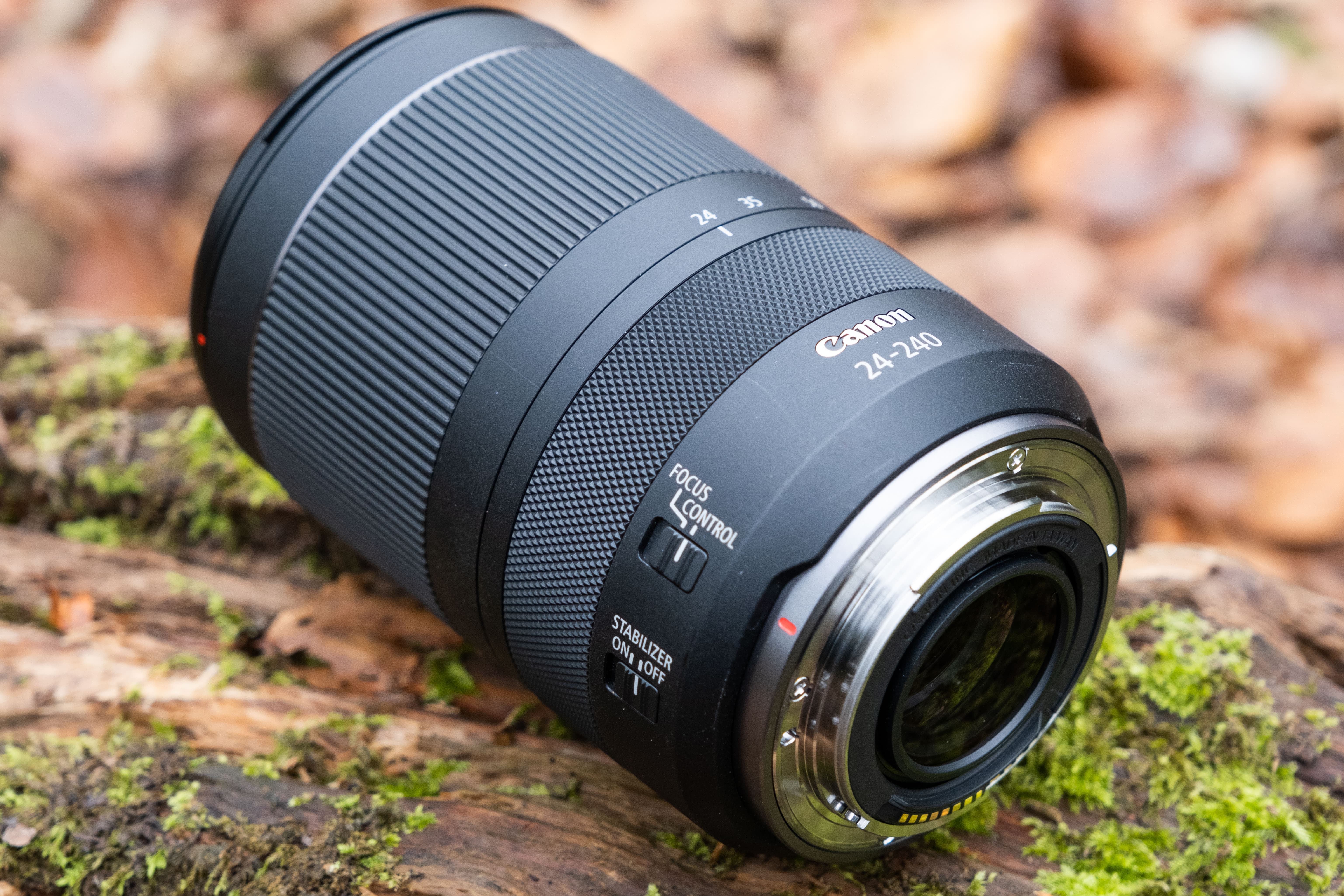
The focus/control switch is located above the Stabilizer On/Off switch
For a travel zoom to be successful, size, portability and weight are key. The RF 24-240mm F4-6.3 IS USM has a noticeably thinner barrel than many of the L-series lenses Canon has released into its RF lineup. With a diameter of 80.4mm, a retracted length of 122.5mm and weighing a respectable 750g on the scales, it balances nicely and is looks in proportion with Canon’s EOS R models.

The zoom ring on the RF 24-240mm F4-6.3 IS USM is rubberised to enhance grip when your hands are wet or when it’s operated with gloves
Internally, the lens features an optical construction that consists of 21 elements in 15 groups, with seven diaphragm blades. To offset handshake and prevent handheld images at telephoto lengths being susceptible to blur, Canon has equipped the lens with a highly effective five-stop image stabilizer – an essential feature given that no EOS R model to date features in-body image stabilisation (IBIS). The lens doesn’t benefit from Canon’s latest electronic floating focus control mechanism like we’ve recently seen in the RF 70-200mm F2.8L IS USM, however it still promises fast and quiet focusing with its near-silent single Nano Ultrasonic (USM) motor.

A view of the rear of the lens showing the twelve metal contacts
In contrast to existing RF lenses, which include an additional click-stopped control dial on the barrel, the lens has a dual control ring that can be switched between manual focusing and setting exposure parameters, using a selector on the barrel. I’ll touch on this in more detail shortly. Other points of interest include its 0.5m minimum focus distance at full telephoto, a variable minimum aperture range of f/22-f/38 and acceptance of screw in filters and adapters via a 72mm filter thread at the front.

The lens accepts filters and adapters via a 72mm filter thread at the front. Unusually, a lens hood is not included in the box and has to be purchased separately
The lens comes with front and rear lens caps as you’d expect, however a hood and lens case/pouch aren’t bundled in the box. These are both optional accessories, with the EW-78F hood and LP1219 case adding £35 and £25 to the price respectively.
Canon RF 24-240mm F4-6.3 IS USM review: Build & Handling
The lens looks right at home paired with Canon’s EOS R cameras. The dark silver surround to the mount blends nicely with the mount of EOS R models and the matte black barrel has a similar texture and finish to the top plate of the EOS RP and EOS R. To prevent the zoom extending inadvertently it has a lock switch that can be engaged at 24mm, but unlike some lenses that only require a sharp twist of the zoom ring to disengage it, it does require you flick the switch back again to unlock it.

The lock switch can be engaged at 24mm to prevent the zoom extending
On the opposite side you’ll find the stabiliser switch with on/off positions. Above it is the focus/control switch that lets you choose whether the diamond knurled control ring is used to manually focus or change a user-specified exposure setting. Enter the customize dials option in the menu of the camera and the control ring can be set to adjust aperture, shutter speed, ISO or exposure compensation, either directly, or by holding the metering button if you’d like to avoid accidental or unintentional changes.

A maximum aperture of f/4 can be used between 24mm and 30mm. Users can shoot at f/4.5 between 30mm and 60mm, with f/5.6 available between 60mm and 130mm. Push beyond 130mm and the maximum aperture you can shoot at is f/6.7
It should be pointed out that the control ring is quite sensitive. It doesn’t need to be rotated far before settings change and it’s positioning between the focus ring and switches allows you to operate it comfortably with your thumb while the barrel is being supported in your left hand.
Despite not having a red ring, which denotes a professional L-series lens, the overall build quality is very good. The zoom ring is rubberised just as it should be and the plastics used in the construction of the barrel are of high quality. The switches operate positively and the clickless aperture control when shooting movies will be welcomed by videographers. Best of all, the zoom has a short throw through 100 degrees, meaning you can get from 24mm to 240mm, or vice versa, very easily in one short movement. The lens has sufficient resistance to prevent the zoom creeping when the camera is pointed down and it’s consistently smooth throughout its zoom range with no tight spots or change in fluidity.

Here the control ring is set to its ‘control’ setting, which allows you to take control of different exposure variables directly from the lens
Extending the lens to its maximum focal length does increase its overall length to 192mm, which is 69.5mm longer than when it’s retracted; however the front of the lens doesn’t rotate, which is good news for those who work with filters and don’t want to be forever readjusting them between shots.
Canon RF 24-240mm F4-6.3 IS USM review: Image Quality
Superzooms have their work cut out when it comes to resolving excellent image quality across their extensive focal ranges. Unlike primes, which are optimised to produce the finest optical quality at one particular focal length, a compromise in optical performance usually has to be made choosing an all-in-one lens and the RF 24-240mm F4-6.3 IS USM is no exception.

Canon EOS R, Canon RF 24-240mm F4-6.3 IS USM @ 24mm, 1/80sec at f/16, ISO 200 (In-camera corrected JPEG)
Studying real-world images taken with peripheral illumination correction and the digital lens optimizer turned on from the lens aberration correction settings revealed no barrel distortion or vignetting towards the corners in JPEGs captured at 24mm. It’s not the same story for Raw files though, which are subject to barrel distortion at 24mm, turning to pincushion distortion at longer focal lengths.

Canon EOS R, Canon RF 24-240mm F4-6.3 IS USM @ 24mm, 1/80sec at f/16, ISO 200 (Uncorrected Raw file) Note the severe barrel distortion and dark corners.
The image circle doesn’t fully cover the sensor at 24mm either so you can expect very dark corners as shown in the image above. Thankfully, a lens profile is available in the latest versions of Camera Raw and Lightroom. This does a fine job of correcting the dark corners, though you should still expect the corners at wide angle to be soft compared to the centre of the frame, even when stopped down. The images below are taken at the widest (24mm) and longest (240mm) ends of the zoom range.

Canon EOS R, Canon RF 24-240mm F4-6.3 IS USM @ 24mm, 1/800sec at f/5.6, ISO 200 (In-camera corrected JPEG)

Canon EOS R, Canon RF 24-240mm F4-6.3 IS USM @ 240mm, 1/400sec at f/6.3, ISO 200 (In-camera corrected JPEG)
Reviewing my images closely also revealed that uncorrected Raw files are prone to exhibiting green and purple fringing, but this was removed effectively by ticking the Remove Chromatic Aberration box or taking manual control of the Defringe sliders. It goes without saying; if you regularly shoot JPEGs you’ll want to double check all lens aberration corrections are turned on within the camera before you shoot. If you prefer to work with Raw files, applying a lens profile during post processing to correct its optical flaws is a must.

Canon EOS R, Canon RF 24-240mm F4-6.3 IS USM @ 240mm, 1/400sec at f/6.3, ISO 250 (In-camera corrected JPEG)
The results from real world testing are consistent with those we recorded in the lab. Though sharpness in the centre at 24mm resolved the highest figure, users should note sharpness towards the edge is considerably softer. Zoom in to around 70mm and a noticeable improvement in corner sharpness is obvious right across the aperture range, with the best edge-to-edge sharpness in the mid point of the zoom range being recorded around f/8.

Canon EOS R, Canon RF 24-240mm F4-6.3 IS USM @ 240mm, 1/400sec at f/6.3, ISO 250 (Uncorrected Raw file) Note the pincushion distortion on the horizon
Sharpness does drop off again at the edge when you use it at longer telephoto lengths, however sharpness levels in the centre at 240mm at its maximum aperture of f/6.3 are impressive for a super zoom. There’s a slight improvement to be gained by closing down to f/8. Overall, the sharpness performance in the centre is good for all-in-one lens and my lasting impression is that it holds up rather better at the telephoto end than many other superzooms.
Canon RF 24-240mm F4-6.3 IS USM review: Resolution, shading and curvilinear distortion
Resolution
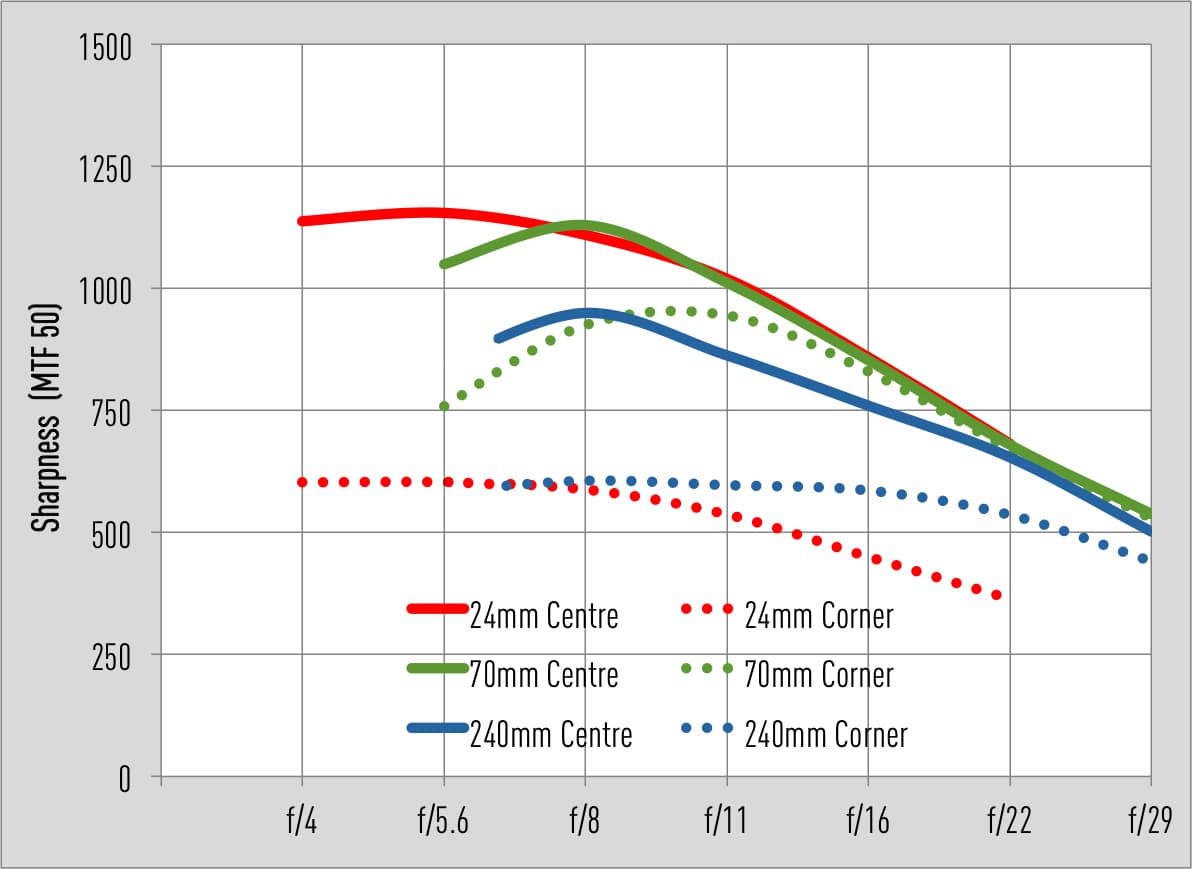
Our Image Engineering Tests tell us the lens is sharpest in the centre when it’s used at the wide end of the zoom, with corner sharpness improving as you start to zoom in. The best edge-to-edge sharpness is resolved around 70mm at f/8, with reasonably good centre sharpness being maintained at 240mm between f/6.3 and f/11. The level of sharpness drops off quite quickly beyond f/11 owing to the introduction of diffraction so it’s recommended not to stop down too far if it can be avoided.
Shading
Users shooting in the JPEG format can correct for corner shading effectively in-camera by enabling the peripheral illumination setting within the lens aberration correction settings from the main menu. Users will notice that uncorrected raw files suffer from corner shading at wide apertures so it’s recommended that lens profiles are taken advantage of to remove it.
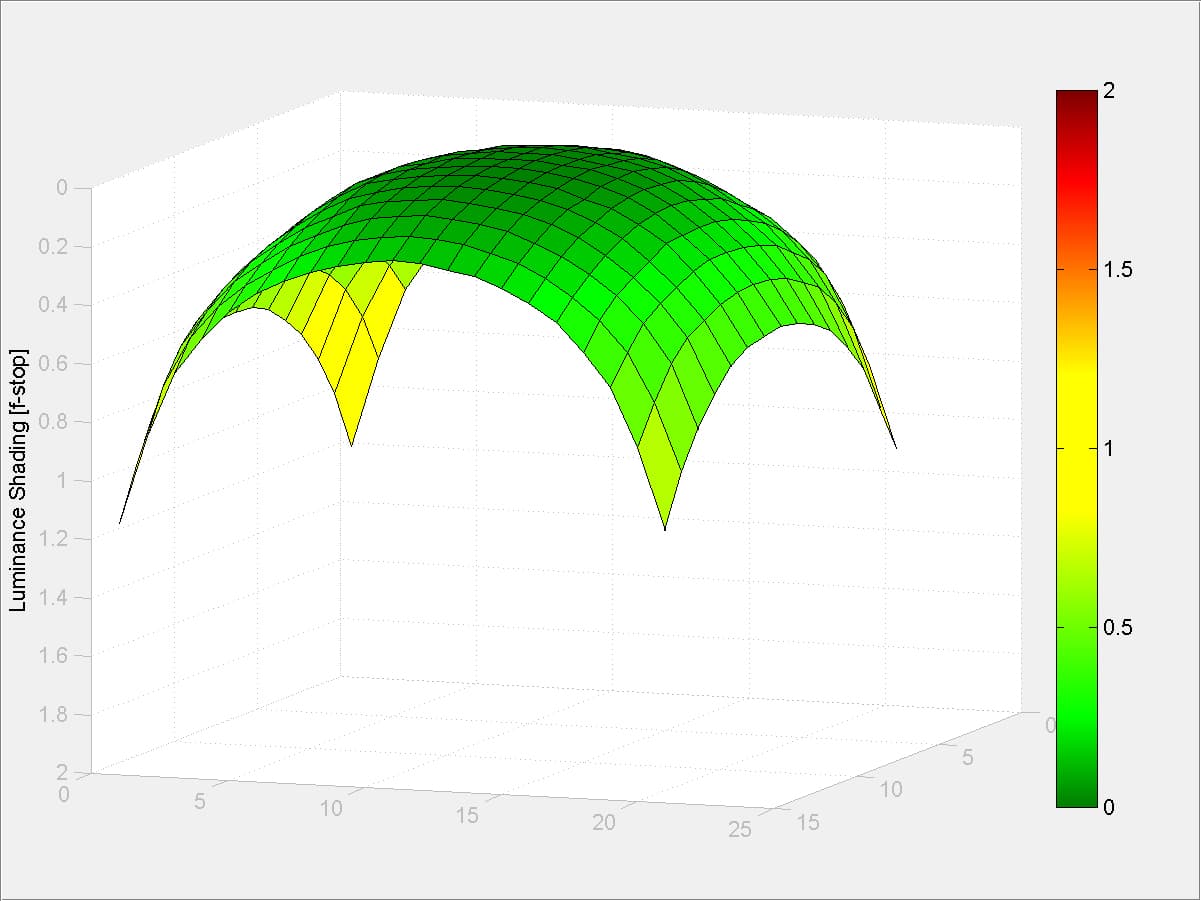
Canon RF 24-240mm F4-6.3 IS USM, Raw, 24mm @ f/4
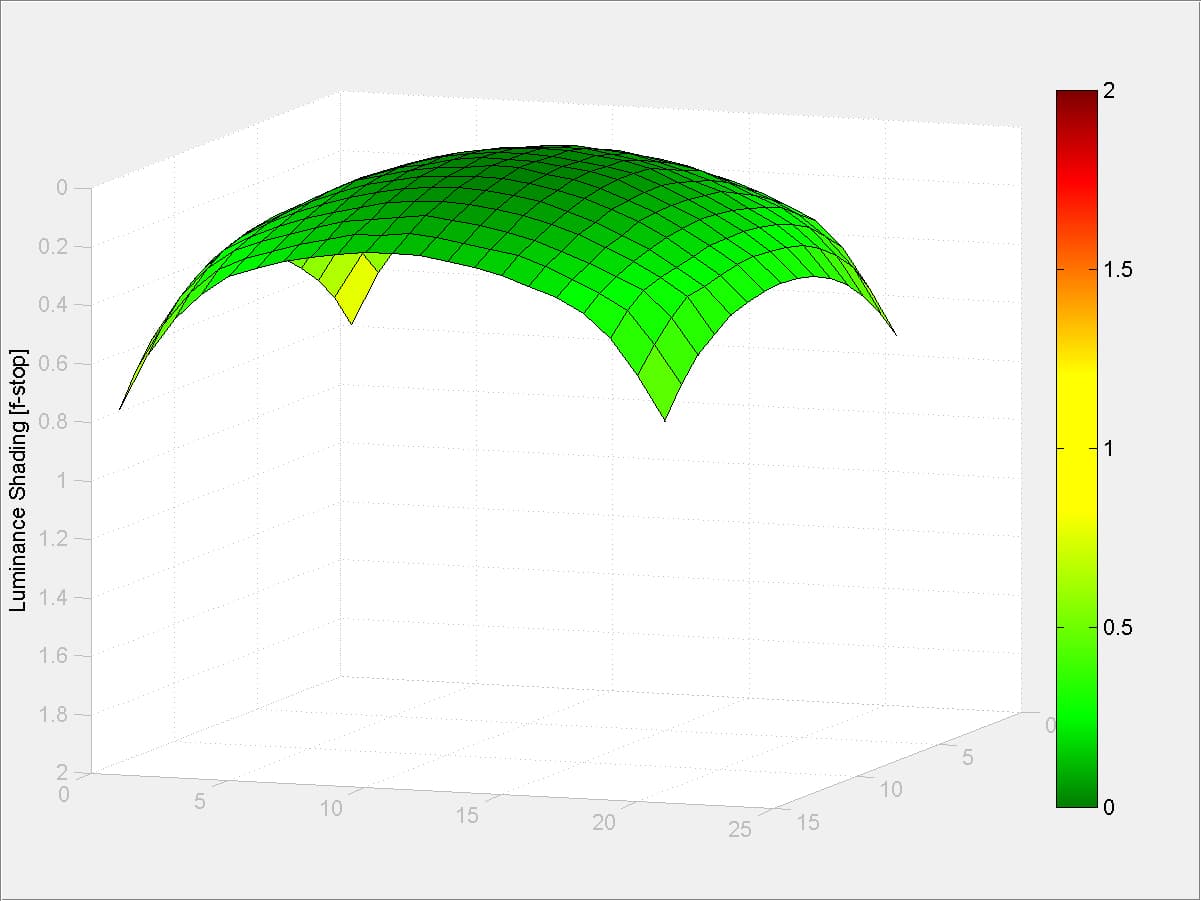
Canon RF 24-240mm F4-6.3 IS USM, Raw, 24mm @ f/5.6
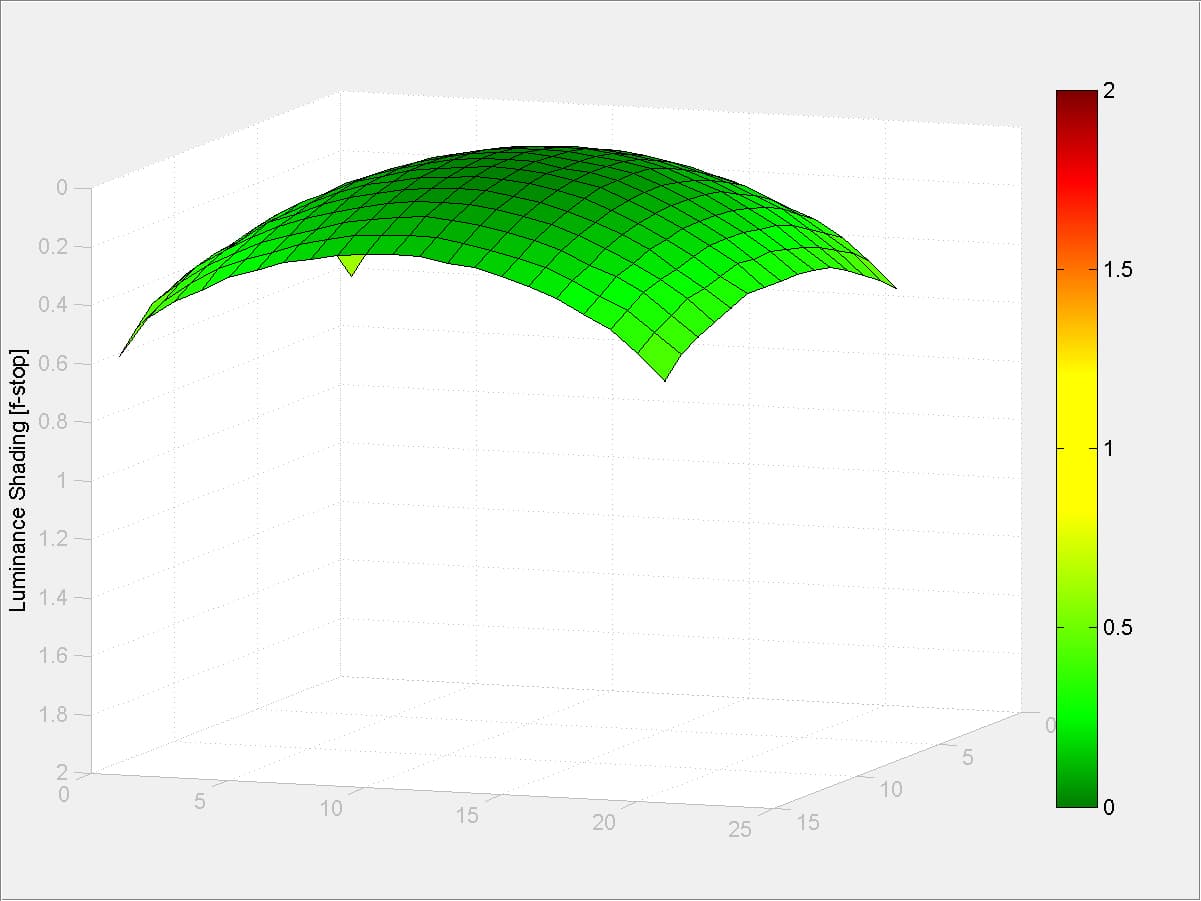
Canon RF 24-240mm F4-6.3 IS USM, Raw, 24mm @ f/8.0

Canon RF 24-240mm F4-6.3 IS USM, Raw, 70mm @ f/5.6
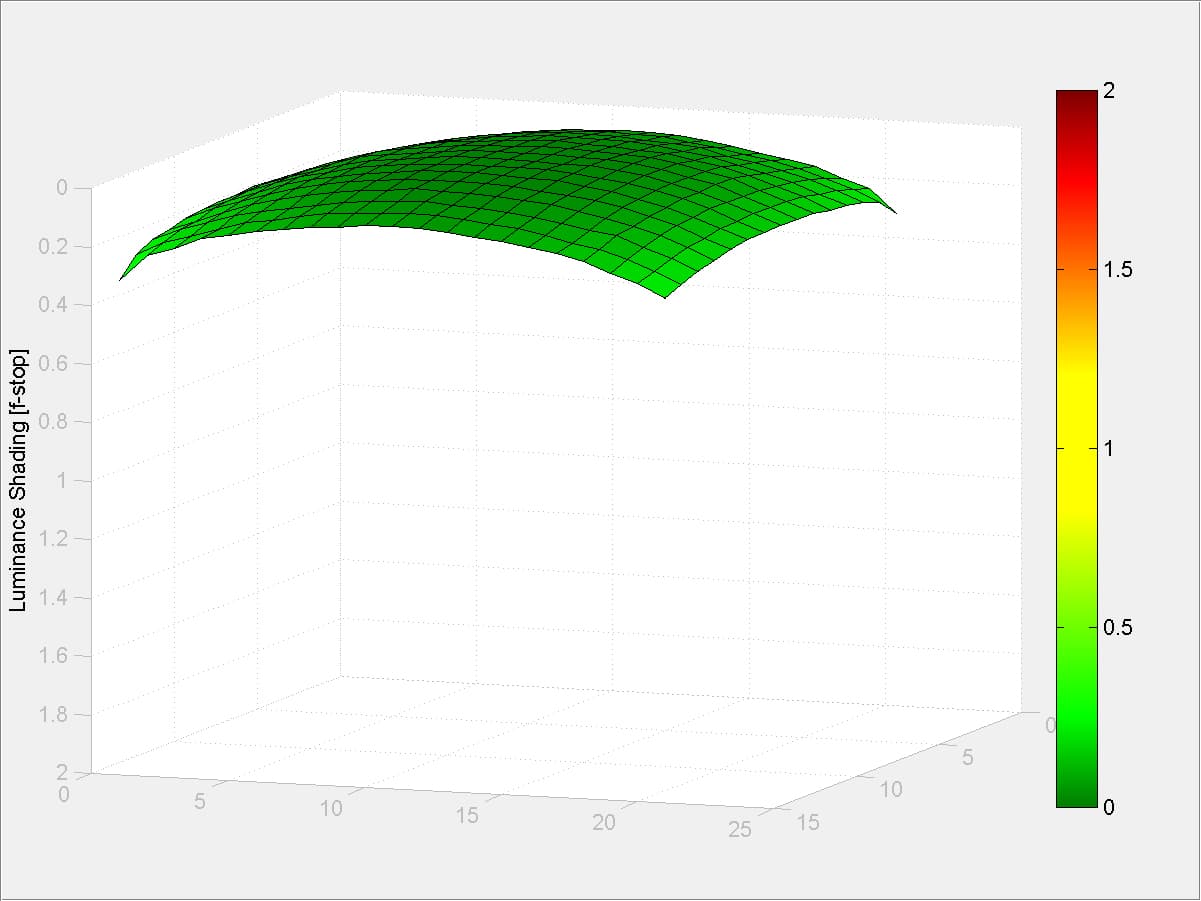
Canon RF 24-240mm F4-6.3 IS USM, Raw, 70mm @ f/8.0

Canon RF 24-240mm F4-6.3 IS USM, Raw, 70mm @ f/11
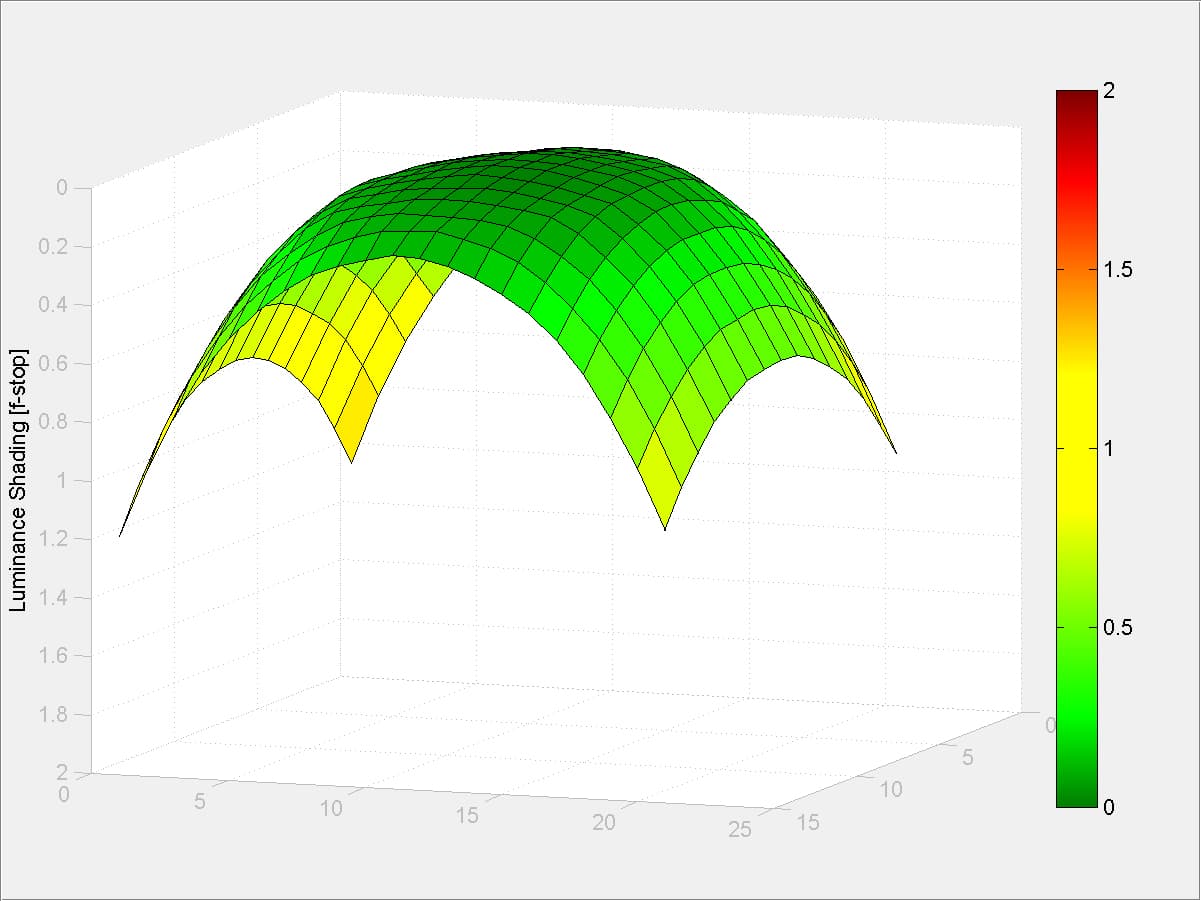
Canon RF 24-240mm F4-6.3 IS USM, Raw, 240mm @ f/6.3
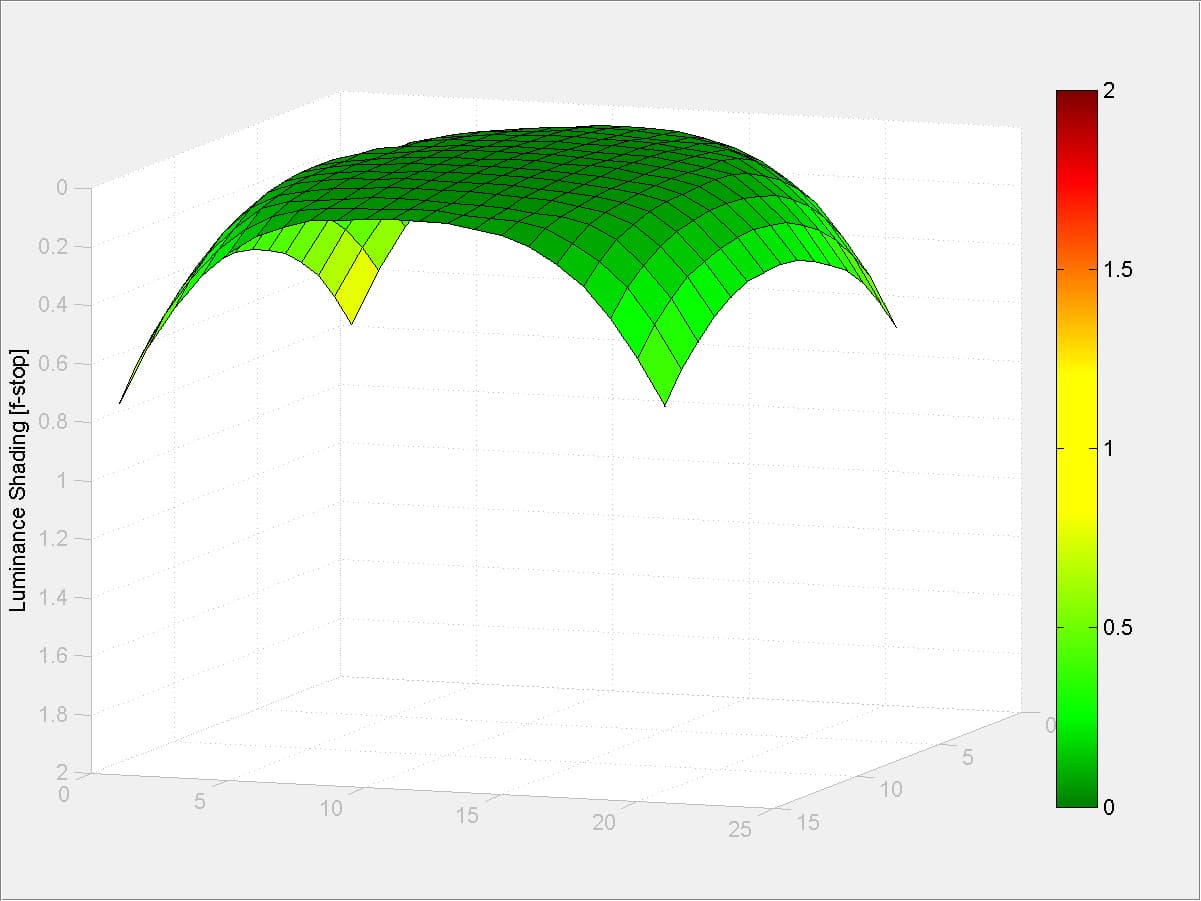
Canon RF 24-240mm F4-6.3 IS USM, Raw, 240mm @ f/8.0
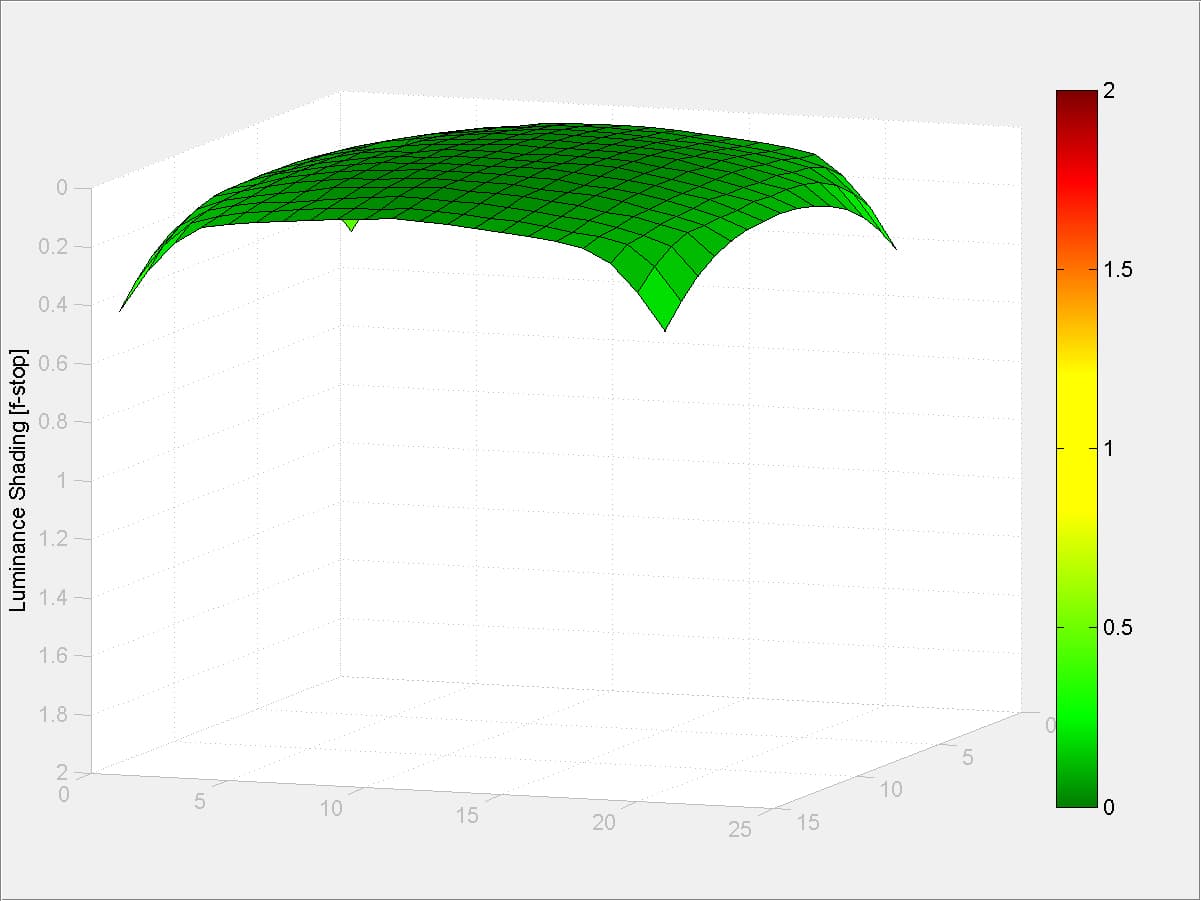
Canon RF 24-240mm F4-6.3 IS USM, Raw, 240mm @ f/11
Curvilinear distortion
With the digital lens optimizer (DLO) turned on, curvilinear distortion is effectively dealt with and removed in JPEG images. Shooting in raw and inspecting uncorrected images tells us that the lens exhibits severe barrel distortion at 24mm, which quickly turns to pincushion distortion. Correcting this during post processing is essential if you’d like horizons and straight lines in your images to appear straight and true.
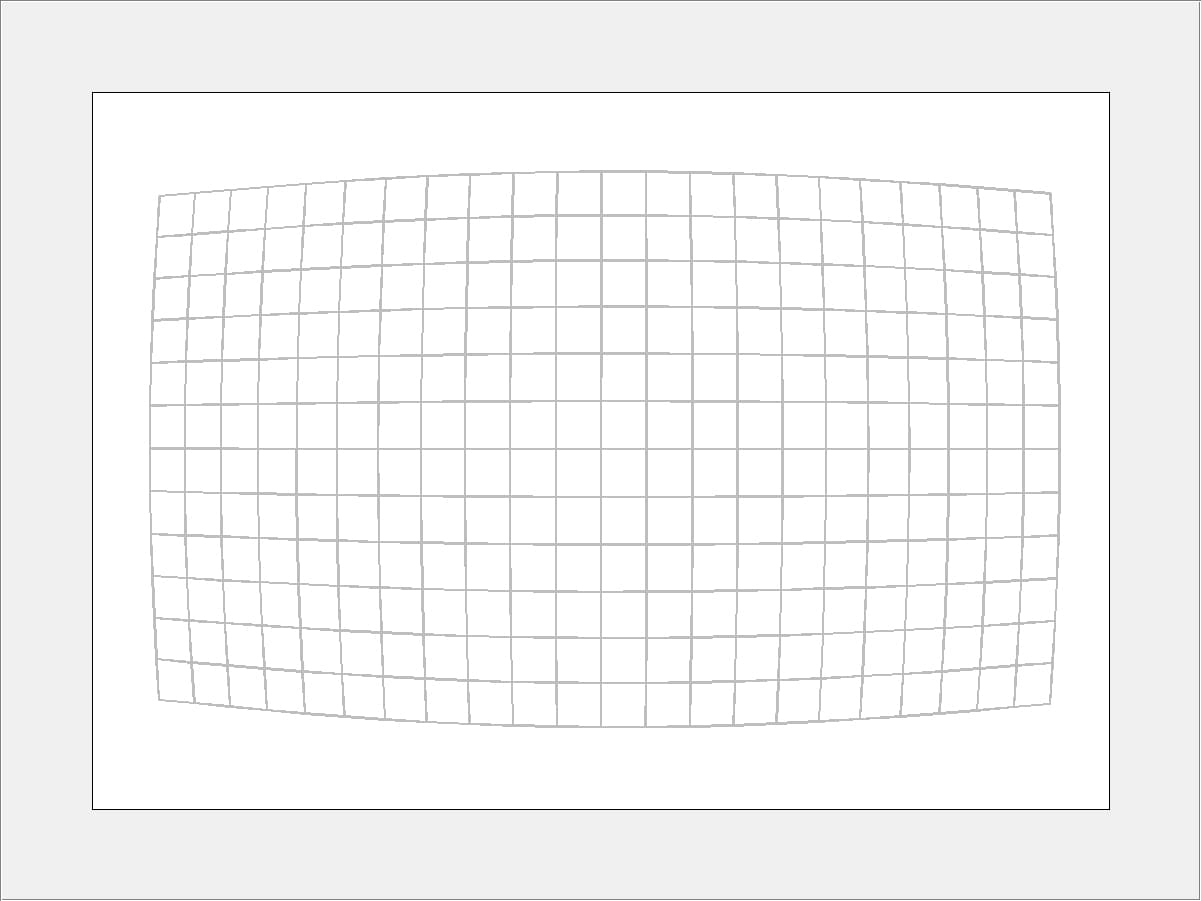
Canon RF 24-240mm F4-6.3 IS USM, 24mm, -8.7% TV SMIA (uncorrected Raw)

Canon RF 24-240mm F4-6.3 IS USM, 24mm, -0.2% TV SMIA (corrected JPEG)

Canon RF 24-240mm F4-6.3 IS USM, 70mm, 2.9% TV SMIA (uncorrected Raw)

Canon RF 24-240mm F4-6.3 IS USM, 70mm, -0.6% TV SMIA (corrected JPEG)

Canon RF 24-240mm F4-6.3 IS USM, 240mm, 3.1% TV SMIA (uncorrected Raw)

Canon RF 24-240mm F4-6.3 IS USM, 240mm, -0.5% TV SMIA (corrected JPEG)
Canon RF 24-240mm F4-6.3 IS USM review: Verdict
Canon was lacking an all-in-one lens for its EOS R system and they’ve delivered a respectable example with the Canon RF 24-240mm F4-6.3 IS USM. It’s not optically perfect though and you do need to be prepared to make some compromises when it comes to the sharpness that’s resolved in the corners at wide angle and telephoto lengths.

As is often the case with superzooms, it’s not adverse to the effects of curvilinear distortion, vignetting or chromatic aberration either, however these optical flaws are brilliantly corrected in-camera and can be remedied easily enough in raw files by applying the relevant lens profile.

The main appeal of this lens for most will be its zoom range. It’ll cover most bases for amateurs and hobbyists who are looking for one lens to do it all, or simply like the idea of travelling light. There’s more to it than just its versatile focal length though. Its optical image stabilisation suppresses handshake admirably, it goes about its business of focusing with little fuss, and provides control of either manual focus or exposure variables from the same control ring. Having a hood supplied in the box would have been the icing on the cake, but this is a minor gripe on what is otherwise a fine example of a superzoom that we’d recommend.


